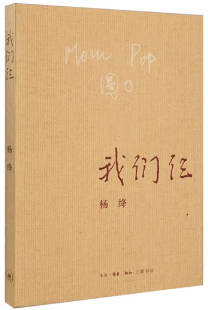"Please let me have a packet of latiao to comfort myself," "What is the feeling of staying with someone that you don’t like? Not wanting to share any latiao with him," "Hey, if you meet someone who sells latiao for living, please marry him!" That these phrases were ubiquitous online in 2016 showed the massive popularity of the snack food latiao, literally "spicy sticks."
“请让我来包辣条安抚一下自己,”“和不喜欢的人呆在一起是什么感觉?不想和他分享任何辣条,”“嗨,如果你遇到卖辣条为生的人,就嫁了吧!”2016年,这些句子在网上随处可见,这显示出零食辣条被广泛追捧。
This junk food "delicacy" is made from gluten, the stuff that makes bread dough chewy.
这种“美味”垃圾食品是由麸质制成的,这种物质使面团耐嚼。
These latiao, which are often of perilously low-quality, are commonly sold at roadside stands for as little as 0.5 yuan ($0.08).
这些通常情况下品质很低的辣条通常在路边摊售卖,价格只有五毛。
Although the food authorities have launched several crackdowns on substandard latiao, similar spicy junk and other shoddy snacks are still common.
尽管食品当局已经对这种不达标辣条实施了几次强制取缔,但是相同的麻辣垃圾食品和其他劣质零食仍然普遍。
They are especially popular in rural China where they threaten the health of millions of children.
他们在中国农村特别流行,他们威胁着成百上千万儿童的健康。
China has 140 million rural children, among whom around 9 million have been "left behind" by their migrant parents.
中国有一亿四千万农村儿童,他们中,有近九百万留守儿童。
Apart from enhancing food safety regulation enforcement in rural areas, Chinese experts have called for including dietary knowledge into the country’s compulsory education curriculum.
除了加强农村食品安全管理执法力度外,专家还呼吁将饮食知识纳入国家义务教育课程。
In interviews with teachers in rural parts of Central China’s Hunan and North China’s Shanxi provinces, the Global Times was told that "0.5 yuan snacks" could be seen in almost every store in local villages.
在和中国中部湖南和华北山西省农村地区的老师采访中,《环球时报》被告知,当地村庄几乎每家商店都可以看到“0.5元小吃”。
Children are especially interested in buying latiao, dried tofu, ice lollies and brightly-colored soft drinks. Many of them lack detailed product information.
孩子们对购买辣条,臭豆腐,冰棍和亮色软饮很感兴趣。很多产品缺乏详实的产品信息。
Peng Yala, professor at the School of Agricultural Economics and Rural Development at the Renmin University of China, has been conducting research in 12 rural schools in Jiangxi, Henan, Hebei, Sichuan and Shanxi provinces for three years. Her team found that food safety problems are extremely serious in rural areas, especially among the left-behind children of migrant workers.
三年来,中国人民大学农业经济与农村发展学院教授彭亚拉一直在江西,河南,河北,四川,山西等省的12所乡村学校进行研究。 她的小组发现,农村地区的食品安全问题十分严重,特别是农民工留守儿童。
Peng told the Global Times that of the 30 brands of latiao they probed, 30 percent were substandard and featured false factory addresses and official telephone numbers. Moreover, 73 percent of the 5,000 students surveyed said they eat these snacks regularly, with some consuming three to four packages of latiao a day.
彭先生告诉《环球时报》,他们检测的三十种辣条中,30%都不达标,以假工厂地址和官方电话为特征。除此以外,参加调查的5000名学生中,73%的孩子经常吃这些零食,有些孩子一天吃三四袋辣条。
Those "0.5 yuan snacks" usually contain high levels of salt which could lead to high blood pressure. Some of the latiao his team tested had levels of salt that reached over double the national standard, said Peng.
这些“五角零食”通常含有导致高血压的高盐分。他的团队测试的一些辣条含盐量是国家标准的两倍多,彭说。
Moreover, underground latiao factories usually added excessive quantities of preservatives and various kinds of additives. "Some businessmen were so crafty that they added 22 different types of additives to keep each under the national standard to evade supervision," said Peng.
另外,地下辣条工厂通常加入过量的防腐剂和各种添加剂。 彭先生说:“有些商人非常狡猾,他们添加了22种不同类型的添加剂,使每个添加剂都达到国家标准以躲避监管。”
In June, the Beijing Food and Drug Administration launched a large-scale campaign to crackdown on "0.5 yuan snacks" in wholesale markets and shops near schools. A total of 6,100 kilograms of substandard snacks were removed from the capital’s shelves.
6月,北京市食品药品监督管理局在批发市场和附近的商店开展了“0.5元小吃”大型活动来打击这些食品。共有6100公斤不合标准的零食从首都的货架上拆除。
Since 2015, the State Food and Drug Administration and other local administrations have reported 195 batches of problematic latiao, covering 131 manufactures from Henan, Hunan, Anhui provinces and the Xinjiang Uyghur Autonomous Region. Problems they found include the presence of excessive additives, bacterial colonies and sugar substitutes.
自2015年以来,国家食品药品监督管理局等地方行政部门报告了195批问题辣条,覆盖了来自辽宁,河南,湖南,安徽,新疆维吾尔自治区等131个地区的制成品。他们发现的问题包括存在过量添加剂,细菌菌落和糖代用品。
It is very hard to supervise food quality in rural areas as many underground factories can "flow" from one place to another. For example, there was a street in North China’s Hebei Province packed with latiao-making factories. After a local government crackdown, they moved to another street in a village in Northeast China’s Jilin Province.
因为很多地下工厂可以从一个地方“流入”另一个地方,所以很难监管农村地区的食品质量。比如,中国北部河北省有一条街,充斥着辣条制作工厂。继一家本地政府倒台后,他们搬到了中国东北部吉林省农村的另一条街。
Apart from weak supervision, Peng said that a lack of education and awareness of what constitutes a good diet are the real problems. "Many left-behind children are watched by their grandparents who have no knowledge of food safety."
彭先生说,除了监督薄弱外,真正的问题是缺乏教育和对好饮食的认知。 “对食物安全没有认知的爷爷奶奶看着许多留守儿童。”
The expert called for the government to promote legislation on dietary education and include such education into the compulsory curriculum as soon as possible.
专家呼吁政府推行饮食教育立法,并尽快将此类教育纳入义务教育课程。

新年伊始,听说有好多同学声称自己去年的读书li...

不知是不是因为今年疫情的缘故,总觉得时间过得...

2020年即将过去,本年度的【好书荐读】系列也迎...
